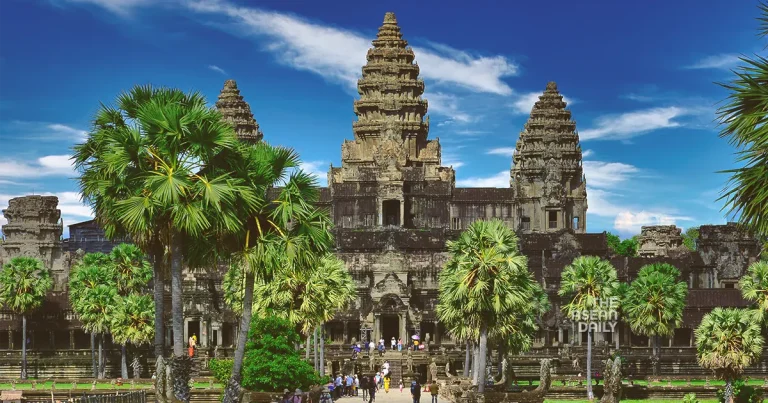3-10-2023 (PHNOM PENH) The Cambodian Ministry of Culture and Fine Arts has taken action to oversee the construction of a temple in Thailand’s Buriram province, which closely resembles Cambodia’s iconic Angkor Wat. The ministry is determined to preserve the integrity of its ancestral heritage and is committed to addressing this issue.
In response to concerns raised by Cambodian citizens, particularly on social media, calling for government intervention in the construction of a structure that bears a striking resemblance to the World Heritage site, the ministry clarified that it has been closely monitoring construction activities at the site since the issue first came to its attention in 2021.
The ministry’s previous actions mainly involved diplomatic discussions with Thai counterparts at the embassy in Phnom Penh and the Thai culture ministry.
In a statement issued on September 26, the Cambodian culture ministry confirmed, “After sending experts to inspect the construction site at Wat Phu Man Fah, we found that no additional construction has taken place.”
The ministry emphasized that its approach to such matters involves diplomatic engagement, technical verifications, direct site inspections, and adherence to both national and international legal frameworks, all aimed at preserving its national identity.
Ministry spokesperson Sum Mab confirmed that officials have been monitoring this case since it emerged in 2021, engaging with Thai authorities through diplomatic channels. The Cambodian side had previously requested the architectural plans of the structure to ascertain its resemblance to Angkor Wat. However, the Thai side indicated that they did not possess such plans.
Cambodian experts were dispatched to conduct further inspections with the aim of avoiding any negative impact on diplomatic relations between the two countries. The government is taking cautious steps to address this issue, emphasizing that any claims of replication should only be made after a comprehensive assessment by experts.
The recent inspections have revealed that, at this stage, only the surrounding wall and entrance of the structure have been constructed, making it challenging to evaluate.
The commitment to safeguarding Cambodia’s cultural heritage remains unwavering. The government is determined to prevent replication and will use all available means to address this matter comprehensively.
Sambo Manara, a history lecturer, acknowledged the genuine concern of Cambodian citizens, especially the youth, regarding the construction in Thailand resembling Angkor Wat. He stressed the need for thoughtful responses to avoid causing offense or harming diplomatic ties between the two nations.
Manara highlighted that the government and experts are actively working to address the situation. He noted that several countries, including France, China, and Japan, have constructed models of Angkor Wat in their territories. These structures can never authentically replicate the original 12th-century temple.
The historian reiterated that the structure in Thailand’s Buriram province falls short of being a true replication of Angkor Wat. He emphasized that while the world admires Angkor Wat, issues arise when constructions propagate inaccuracies about it.
Cambodia is not accusing Thailand of replicating Angkor Wat at this stage, as the construction is still in progress and a comprehensive master plan has not been examined. This responsibility falls upon the culture ministry and UNESCO, which is actively working to assess and address the matter.
Manara suggested that instead of merely reacting, people should aim to study and showcase Angkor Wat to the world, promoting a deeper understanding of Cambodia’s rich cultural heritage.




